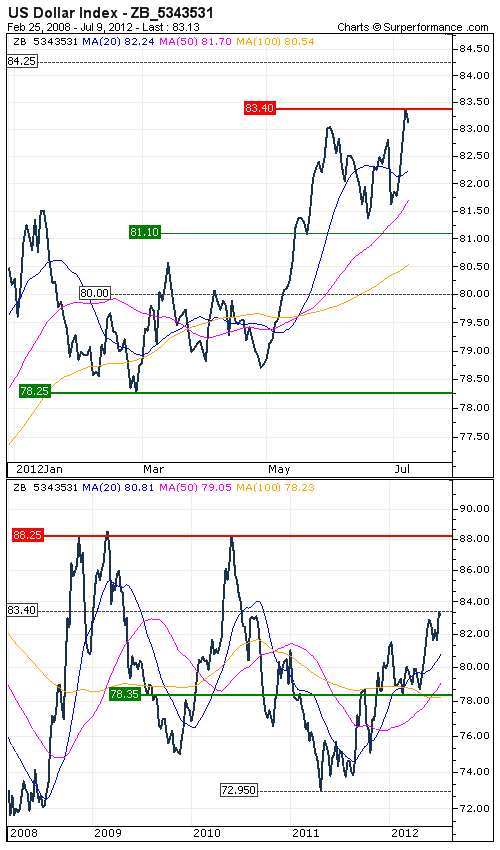US Dollar Index : Gradual return to its 'safe haven' status
By Rodolphe Steffan
In recent weeks we have witnessed a renewed interest in the U.S. Dollar, which may gradually return to its 'safe haven' status in the coming months. The U.S. Dollar signs of recovery seem tangible and investors seem to favor the currency at the expense of precious metals, commodities and the Euro. In an uncertain global economic environment and with the lack of significant progress of the debt crisis in Europe, would the USD be at the beginning of a powerful bullish trend?
The different economic data published last week did not affect the bullish trend of the dollar index. Actually, the almost simultaneous drop of interest rates decided by the ECB and the central bank of China as well as the 50 billion pounds injected in the economy by the bank of England increase the investors fears about the economic outlook. They start to doubt about the efficiency of liquidity injection which make the money flow to US dollar.
The dollar index gained 2.1% on a weekly basis and put in its best performance since December. USDX is now trading at a high of five weeks around 83. The trend remains bullish on a weekly basis over 80 points, which also refers to the 20-week moving average. After a rapid increase, we anticipate a slight correction to 80 points, which would allow us to take a position in the direction of the trend in order to take advantage of an upward acceleration in the direction of 88. A strong break of the 88/92 area would indicate a come back into favor of the Dollar in the coming months.









